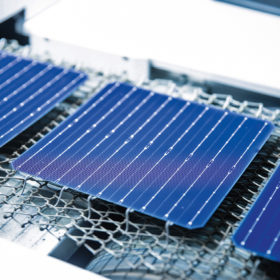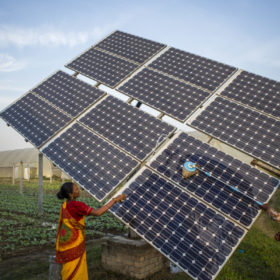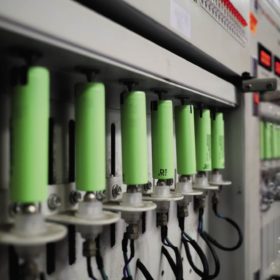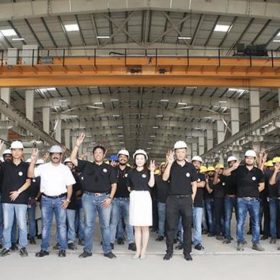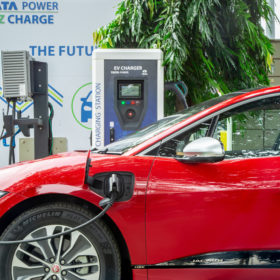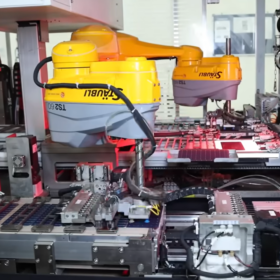Trina Solar showcases n-type bifacial module at REI Expo 2022
Trina Solar introduced its n-type bifacial module with a peak power output of 685 W in the Indian market.
Jakson reveals plans to manufacture solar cells, electrolyzers
Jakson Green will expand its solar module manufacturing capacity to 2 GW, with backward integration into cells, by the end of 2024, CEO and Managing Director Bikesh Ogra told pv magazine on Day 1 of Renewable Energy India Expo 2022. He said the company also has aggressive plans for green hydrogen and ammonia, with a specific focus on distributed generation.
The long read: Integrated solar manufacturing giants emerge
The giants of the Chinese PV industry are now integrated along both ends of the supply chain, amid expectations for strong demand and price volatility. Module makers are adding polysilicon capacity, while poly and wafer producers are making module production a part of their business. But do companies still face the same risks that have brought down vertically integrated solar giants in the past? Vincent Shaw reports from Shanghai.
Making India a manufacturing hub for solar-based, decentralized energy products
A new report by GOGLA highlights the opportunities and challenges in establishing local manufacturing and assembly of solar-based decentralized energy solutions in India. It also explores the actions needed to maximize available opportunities.
Leading RE companies’ receivables period to shrink 20% this fiscal
State-owned electricity distribution companies implementing the Late Payment Surcharge (LPS) scheme may clear dues worth INR 2,000 crore (around $250 million) this fiscal, supporting renewable energy generators to build capacity for growth and reduce leverage.
Battery cell manufacturing in India could attract over $9 billion in investment by 2030, says ICRA
A new report by ICRA says rising electric-vehicle penetration will drive significant investment in battery cell manufacturing in India. It expects EV battery demand in the nation to touch 15 GWh by 2025 and 60 GWh by 2030.
Arctech opens 3 GW solar tracker factory in India
China’s Arctech has opened a 3 GW solar tracker factory in India to deepen its market penetration in the nation. The factory will produce all major components of Arctech solar tracker products.
Avaada to invest $5 billion in green hydrogen, ammonia plant with 6 GW captive renewables in Rajasthan
Ravi Verma, senior executive vice president at Avaada, told pv magazine that the Group would invest $5 billion into setting up an integrated green hydrogen and ammonia plant with 6 GW of captive renewable energy capacity in the state. The green ammonia facility will have a production capacity of 1 million tons per annum.
India’s EV sales to annually surge 49% in 2021-30 period, says IESA
A new India Energy Storage Alliance (IESA) report projects electric vehicle sales to grow by as much as 49% per year to 17 million units by 2030, with electric two-wheelers accounting for almost 88% of total demand.
Bhutan issues tender for 17.3 MW solar park
Bhutan aims to facilitate the construction of its first PV project through a new tender.


